Planting Soybeans
Yesterday, after planting soybeans for a week, Harland finished. I’ll show you all about planting, but first a few factoids about the humble soybean:
- Soy is native to central China, and has been cultivated there since about 3000BC.
- Soy was considered sacred in China due to its ability to “fix” nitrogen from the air. The plant was grown, and then plowed under to introduce the nitrogen it contained into the soil.
- Soy made its way into the countries surrounding China through trade, and finally found its way to Europe in the 1700s.
- During the dust bowl in the United States in the 1930s, it was used to regenerate the soil for its nitrogen fixing properties.
- In the early 1930s, Henry Ford spent over a million dollars on soy research, and began to use soy in the manufacture of cars- everything from paint to shock absorbers to plastics. Ford himself wore a suit made entirely from soybeans, and he was even said to have had dinner parties with only soybean-based foods on the menu.
- Today soybean oil is used for cooking or in processed foods, and soybean meal is fed to livestock. Soy is used to make infant formula, industrial products such as soap, plastics, and clothing, and foods such as soy milk and tofu.
- In 2006 worldwide production of soy was 221 million metric tons.
Wednesday evening, I caught up with Harland while he was planting. He had stopped to fill the seed box on the grain drill with seed.
The grain drill is pulled behind the tractor and does the actual planting. Here’s a close up of the soybean seed.
The soybean’s natural color is a light tan. Seed for planting is red though because it has been treated with a fungicide(fungus preventative), and pesticide(bug preventative).
Here’s a picture of the grain drill.
The large boxy part at the top is the seed box. The tubes coming down out of the seed box at a diagonal are the seed tubes. The seed goes down out of the seed box, through the seed tubes, and is planted 24 rows at a time per pass across the field.
Periodically, Harland checks the seed depth.
Soybeans like to be planted about 1 inch deep.
Harland can adjust the seed depth accordingly on the drill if it isn’t right.
He had been planting all day, and would continue that evening until about 9pm…
back and forth across the field…
This is the last crop he will plant this spring, so Harland can stop putting in those bone-jarring 12 hour days on the tractor… for a while.
Next month the hay will need to be cut and baled.

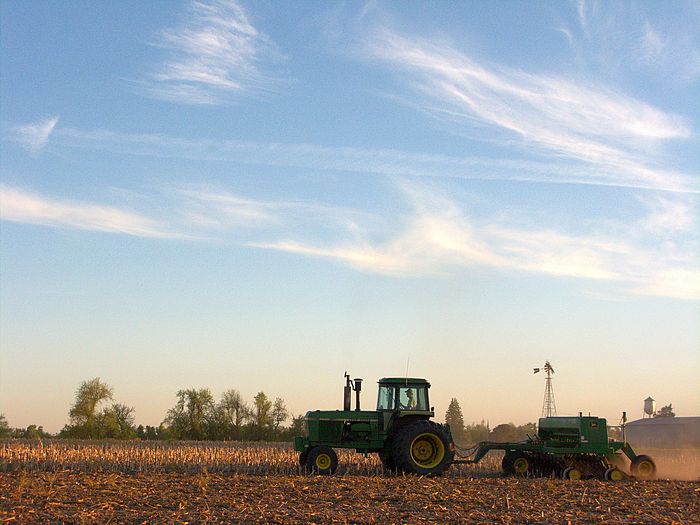
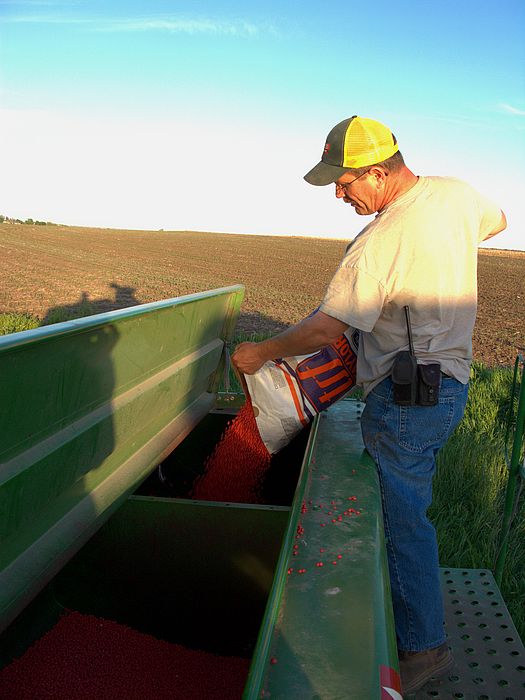
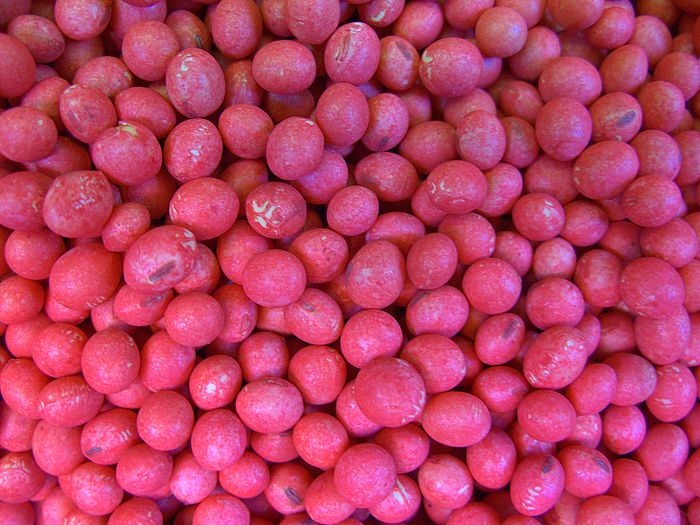
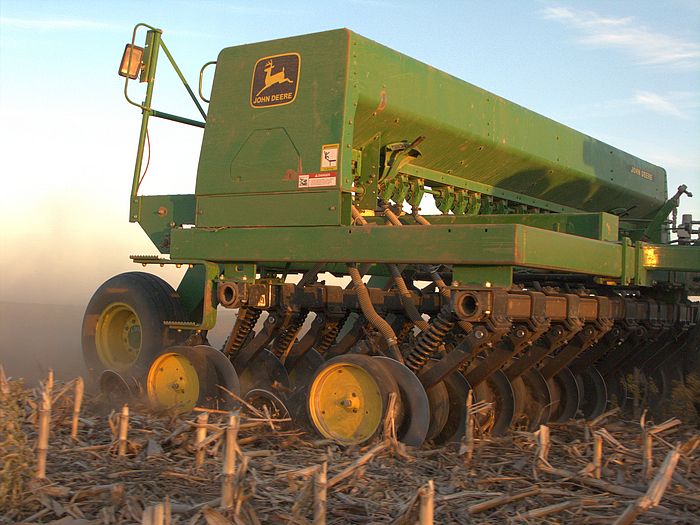
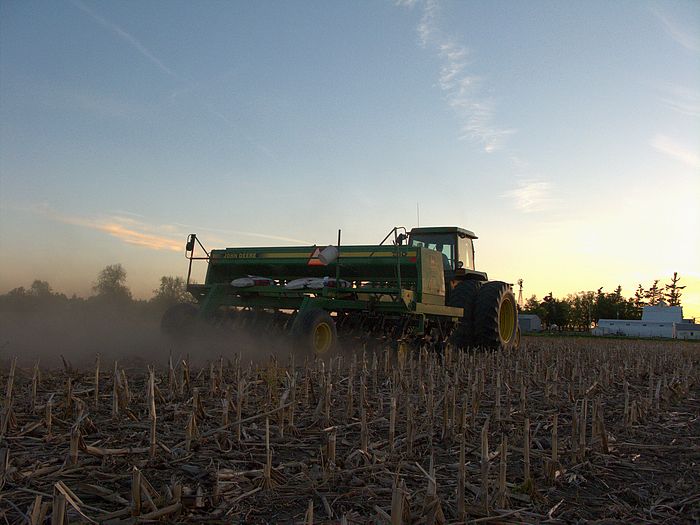
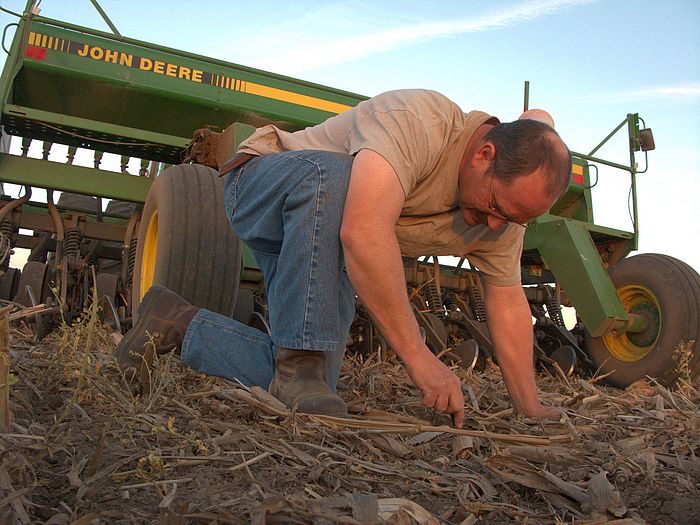

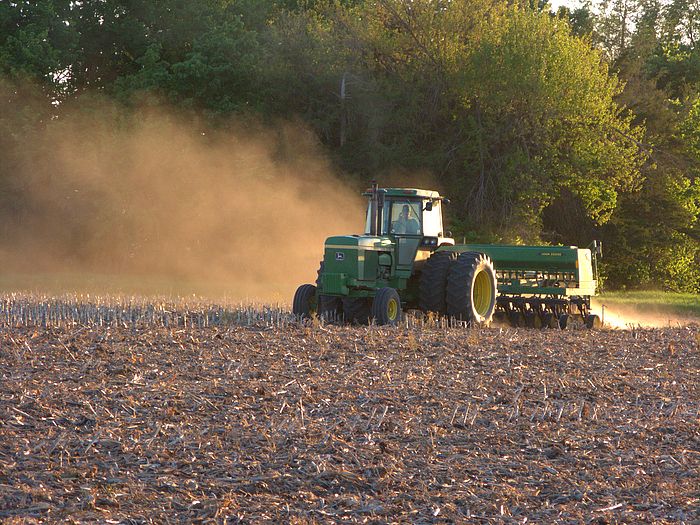
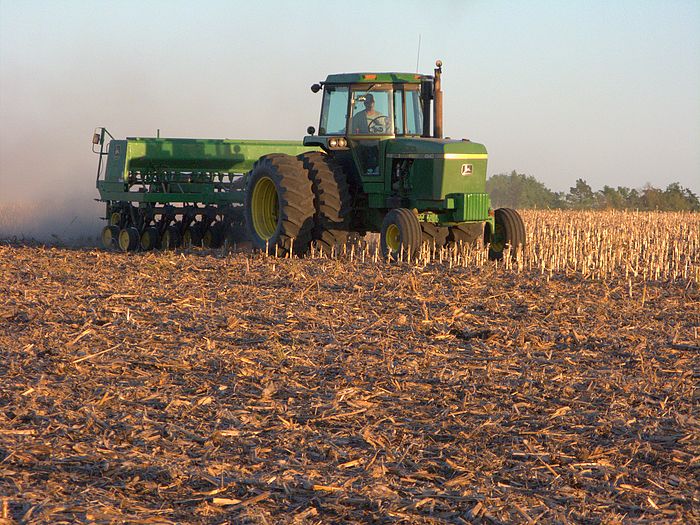
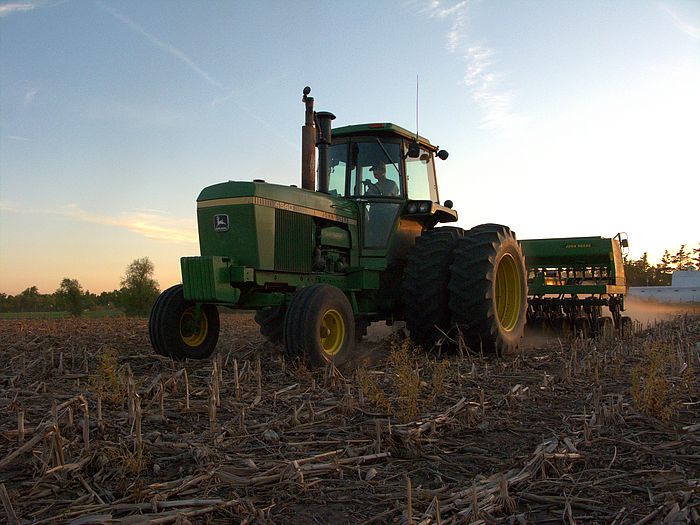
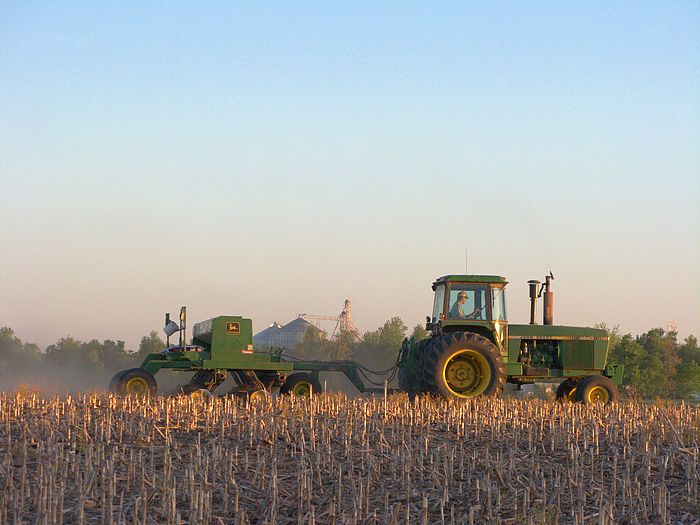
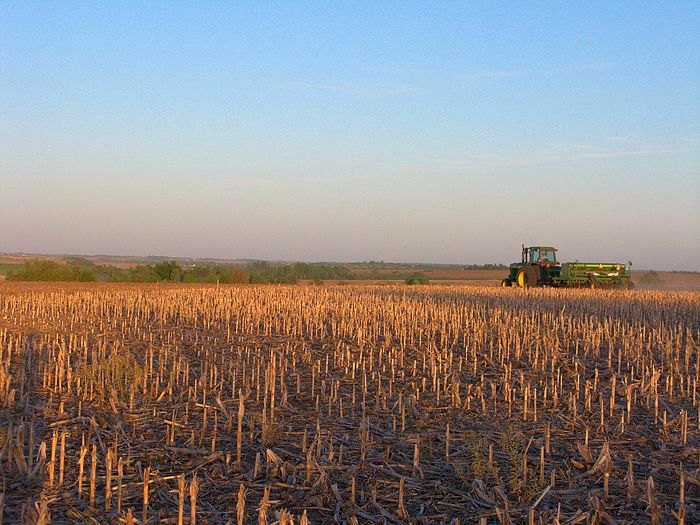
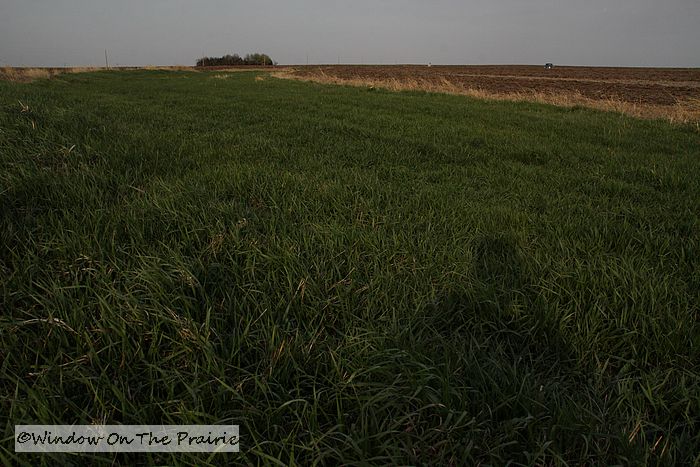
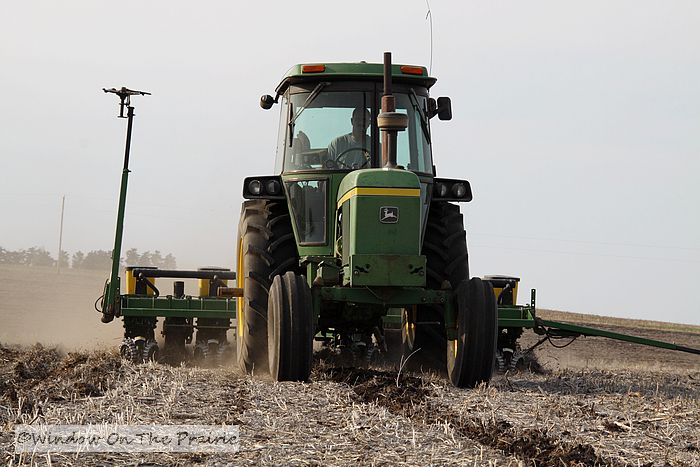

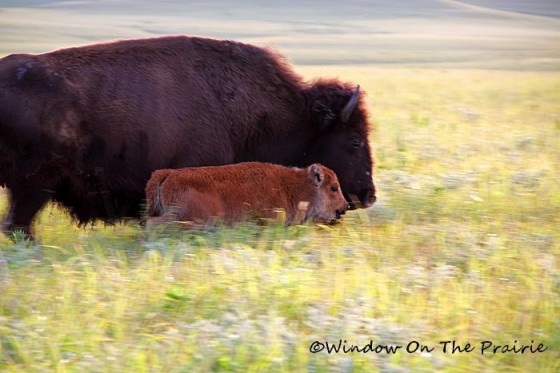
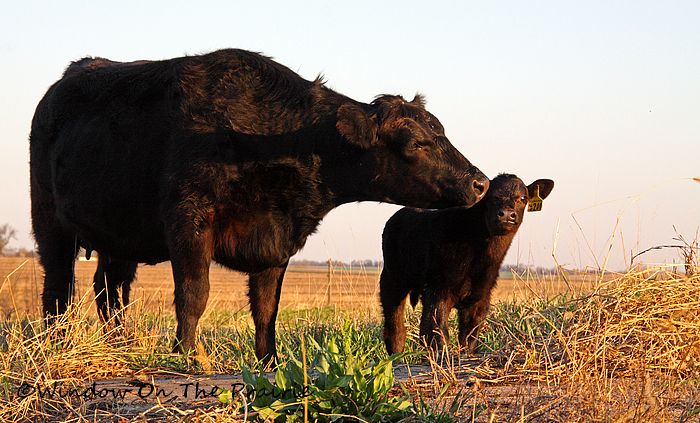


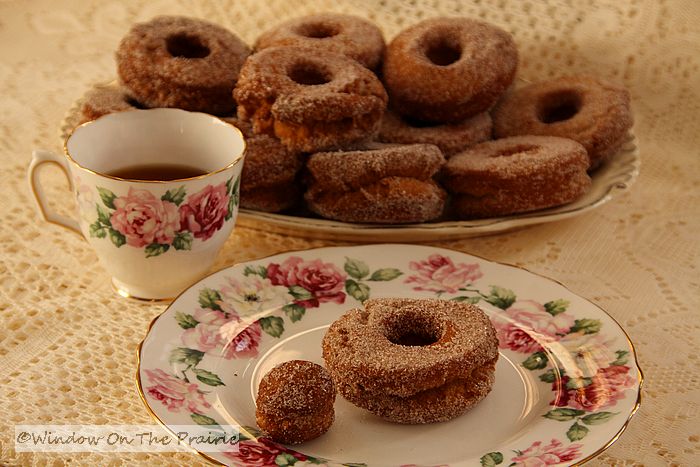
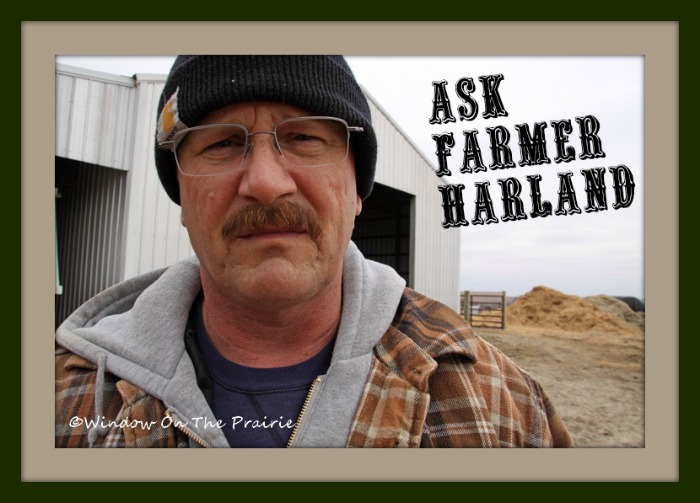



Very informative blog. Nice pictures, helps all the info come together.
Thank you. Appreciate your stopping by!
We just got my corn field planted. It is truly a wonderful feeling to know the seed is in the ground. Wonderful pictures to illustrate the process.
I agree. Such a relief when crop gets into the ground.
This is a beautiful testimony to the work of our nation’s farmers–thanks for posting!
doctor mom, Thank You for visitiing. I hope my blog gives a better understanding about farming life.